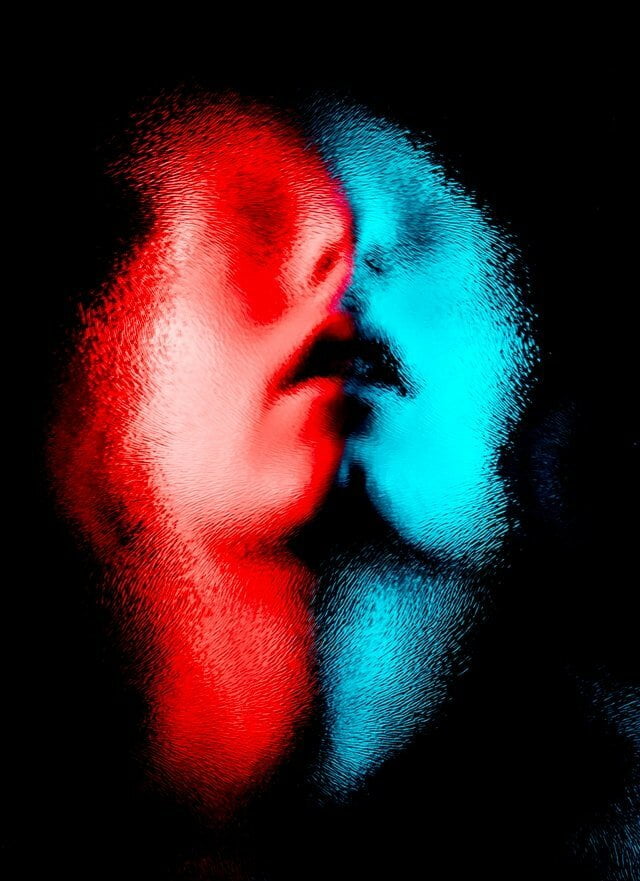What I want to focus on in this article is the real issue surrounding Borderline Personality Disorder (BPD) and that is PAIN.
I’d like to discuss 4 separate types of pain encompassing this diagnosis:
- Stigma
- Reality of the Root Causes
- Family and Friends
- Change
BPD isn’t just painful for the one struggling, but too can be heartbreaking for those within their circle. We need to differentiate and grasp the various types of pain in order to successfully implement healing tools and help those struggling to maintain a healthy lifestyle outside its diagnosis.
The Pain of Stigma
BPD is probably the most stigmatized mental health struggle in this day and age. Although it is receiving more attention, the description of what many consider a typical “borderline” continues to be one that should have been left back in the stone age.
First off, in the mental health arena, denying treatment because of this diagnosis should not be tolerated. Just as those who seek emergency medical care are not turned away from the ER, neither should a human being in the midst of probably the toughest battle of their life be cast aside by any counselor, psychiatrist, psychologist, or therapist.
Yes, I agree if there is a threat to the safety of any party involved that the relationship should be terminated. However, to blindly refuse access to much sought-after treatment because of the negative stigma generalizing those with BPD as manipulative, poisonous, unruly, full of rage, hard to manage or a lost cause should be considered highly unethical.
If a mental health professional doesn’t feel they have the capability to handle and/or work with this diagnosis, they should be upfront and remove it from their list of credentials, to begin with.
Knowing there are 250+ ways to diagnose this disorder should be evidence enough that no two people sharing the label of BPD are one and the same, and thus should not be treated as though they are.
It’s through this type of stigmatization in which countless individuals will give up searching for help at one point or another, due to the added shame and traumatization such treatment can bring.
The Reality of BPD Root Causes
One of the most painful things I went through in the course of healing from BPD was acknowledging, discovering, and accepting the root causes of this diagnosis.
Like many who are living with BPD, mine dates back to childhood abandonment, neglect, and sexual abuse. And I will tell you first hand that even the acknowledgment phase is one that can send a person headfirst into a spiral of disgust, denial, blame, guilt, regret, and deep-seated shame.
Healing from this disorder is a step-by-step process. It’s not going to magically happen overnight. That’s just not the reality of the situation. And thinking medication alone will be a “cure-all” is only going to leave one spinning in circles and feeling like a guinea pig with no hope.
Recovery takes time. And for many, that starts with reversing those unhealthy coping mechanisms (such as cutting, burning, drinking, sex, drugs, gambling, and the like) into healthy ones. Because healing from BPD won’t happen if you keep going back to the same “survival skills” you’ve accumulated over the years.
Getting down to the root causes means facing a whole lot of hurt, anger, and pain, which requires action to be done through feeling and not coping.
This is an extremely painful process and needs to be addressed in a safe and healthy environment.
The Pain of Family and Friends
Quite a bit of negative stigma I find on the internet comes directly from family, friends, and exes.
Here’s the thing. We who struggle with BPD will at some point begin to realize the pain we’ve not only caused ourselves but also UNINTENTIONALLY inflicted upon others. As we start to acknowledge this, the shame of what we’ve done or the ways in which we’ve acted/reacted will begin to surface and you might see us push away or isolate. This is because, at that point, we tend to turn much of the blame onto ourselves.
However, what we need those closest to understand is that it was and is UNINTENTIONAL!! Unresolved trauma, alongside unexpressed emotions, will make most anyone do, act, and/or say things they eventually regret. But again, it takes time to reach these conclusions and understand the ins and outs of our behaviors to arrive at a place of acceptance. Patience is truly essential for everyone involved in this process.
On the flip side, if BPD is left completely untreated, those actions and behaviors by the individual struggling are NEVER going to change until first acknowledging their need for help.
In those types of situations, sometimes you have to make the difficult decision to walk away, not only for the sake of your own mental health but for your family as well.
I’m in no way condoning just up and leaving, however (just like an addict), until the person struggling with BPD is ready AND willing to change, nothing else ever will.
The Pain of Change
Recovery from BPD does not mean returning to a former version of yourself. It involves a process of change through healing the old, in order to build the new.
And for many, that entails leaving their comfort zone, no matter how painful it may be. Until you are ready to become comfortable with the uncomfortable, healing will never happen.
Those who decide they want to thrive versus just surviving must also come to grips with the fact this is a lifelong commitment.
Whatever you learn throughout this process (no matter which form of therapy, coaching, etc. is chosen), you also need to understand those tools must become an everyday priority…from now until forever.
There are many who finish Dialectical Behaviour Therapy (DBT), are then reassessed, and no longer fall within the criteria for a BPD diagnosis. Unfortunately, what is too often left undiscovered is when DBT or any type of therapy is officially “done”, that doesn’t mean in any way, shape, or form that you are.
What happens is people start to discard or begin ignoring the tools they accumulated and will eventually return to old coping mechanisms, habits, or behaviors. Thus falling once again within the realm of BPD.
Such healing mediums include finding your circle of support, those who will hold you accountable, and also understand this is a complex, long-term process that will have its fair share of ups and downs.
It also means the individual struggling has to put in the daily effort and hard, consistent work it takes to repair those wounds which began the cycle of BPD in the first place.
I’m 3+ years into my own journey through unresolved trauma, repeated abuse, addiction, BPD, and let me tell you, it’s not a cakewalk.
But healing IS possible and an option that’s always on the table. Yet until the one struggling finally makes the decision that they’re worth so much more than living a life filled with pain, a rebuilding of one’s self will never truly begin.

Writer, poet, designer, crafter, and mental health advocate. I have encountered struggles throughout life with addiction, depression, anxiety, chronic pain, Complex Post Traumatic Stress Disorder and Borderline Personality Disorder. I no longer identify with the above struggles, however, as I refuse to be defined by a disorder, disease or diagnosis. It is through the guidance of an anxiety coach in which I continue the healing of both my mental and physical health, while in the process supporting others along their own path towards recovery.

